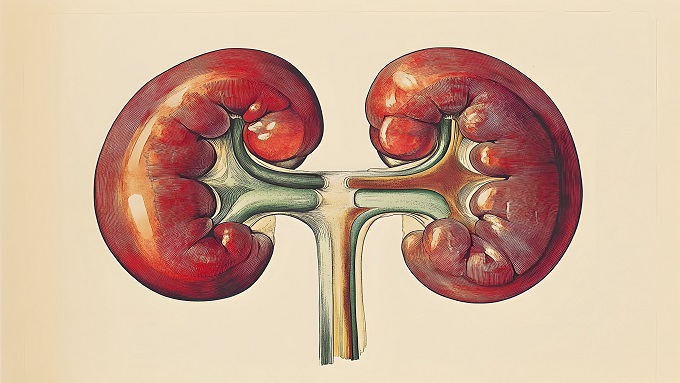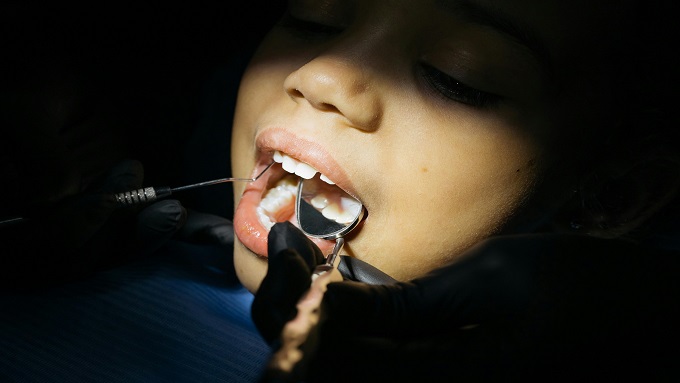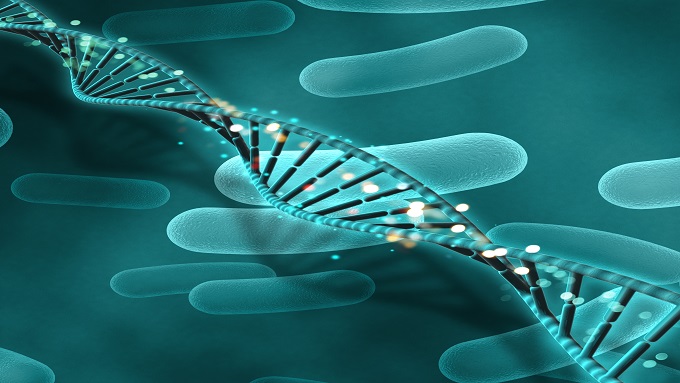GLUCOSE LEVELS OF PLEURAL EFFUSION FLUID AND HER2 STATUS IN PLEURAL-METASTATIC BREAST CANCER

Downloads
Highlights
- Patients with breast cancer who have distant metastases are frequently impacted by pleural effusion.
- HER2 status was found to be substantially correlated with glucose levels in pleural effusion fluid.
Abstract
Background: Patients diagnosed with breast cancer who have also been affected by distant metastases often suffer from pleural effusion. The prognosis of malignant pleural effusions worsens when glucose levels in the pleural fluid are low. Elevated levels of anaerobic glycolysis due to HER2 overexpression cause breast cancer cells to take in more glucose. Objective: This study aimed to identify any correlation between glucose levels in pleural fluid and HER2 status in breast cancer patients. Material and Method: In this research, 35 female patients with thoracocentesis pleural metastatic breast cancer participated in an analytical observational study using a cross-sectional design. Patients who had undergone thoracocentesis had their HER2 status determined based on the information included in their medical records in the Integrated Oncology Clinic (Poli Onkologi Satu Atap (POSA)) Dr. Soetomo General Academic Hospital, Surabaya, Indonesia. After obtaining data on glucose levels in pleural fluid and HER2 status, statistical analysis was carried out to determine the relationship between the two parameters. Results: The statistical test results with a 95% significance level obtained p=0.004 (p<0.05), so it could be statistically said that there was a significant relationship between the glucose level of pleural fluid effusion with HER2 status. The obtained OR values were 10.93 and CI=95% (1.87-63.97), so that it could be interpreted that the low-glucose levels of pleural effusion fluid increase the proportion of patients with positive HER2 compared to not low-glucose levels of pleural effusion fluid. The correlation between the glucose level of pleural effusion fluid and HER2 status was moderately positive (Chi-Square Contingency Coefficient = 0.44). Conclusion: Glucose levels in pleural effusion fluid were significantly correlated with HER2 status.
Ahn, S., Woo, J. W., Lee, K., Park, S. Y. 2020. HER2 status in breast cancer: changes in guidelines and complicating factors for interpretation. Journal of Pathology and Translational Medicine, 54(1): 34-33. doi: https://doi.org/10.4132/jptm.2019.11.03.
Azamjah, N., Soltan-Zadeh, Y., Zayeri, F. 2019. Global trend of breast cancer mortality rate: A 25-year study. Asian Pacific Journal of Cancer Prevention, 20(7): 2015–2020. doi: 10.31557/APJCP.2019.20.7.2015.
Centers for Disease Control and Prevention (CDC). 2023. Immunohistochemistry screening (IHC), CDC. Available at: https://www.cdc.gov/genomics/disease/colorectal_cancer/IHC.htm.
Farhadi, P., Yarani, R., Valipour, E., Kiani, S., Hoseinkhani, Z., et al. 2022. Cell line-directed breast cancer research based on glucose metabolism status. Biomedicine & Pharmacotherapy, 146: 112526. doi: 10.1016/j.biopha.2021.112526.
Fitzgerald, D. B., Leong, S. L., Budgeon, C. A., Murray, K., Rosenstengal, A., et al. 2019. Relationship of pleural fluid pH and glucose: a multi-centre study of 2,971 cases. Journal of Thoracic Disease, 11(1): 123-130. doi: 10.21037/jtd.2018.12.101.
Fumagalli, D., Andre, F., Piccart-Gebhart, M. J., Sotiriou, C., Desmedt, C. 2012. Molecular biology in breast cancer: Should molecular classifiers be assessed by conventional tools or by gene expression arrays?. Critical Reviews in Oncology/Hematology, 84: e58–e69. doi: 10.1016/j.critrevonc.2012.08.003.
Iqbal, N., Iqbal, N. 2014. Human epidermal growth factor receptor 2 (HER2) in cancers: Overexpression and therapeutic implications. Molecular biology international, 2014: 852748. doi: 10.1155/2014/852748.
Jany, B.,Welte, T. 2019. Pleural effusion in adults”Etiology, diagnosis, and treatment. Deutsches í„rzteblatt international. doi: 10.3238/arztebl.2019.0377.
Karkhanis, V., Joshi, J. 2012. Pleural effusion: diagnosis, treatment, and management. Open Access Emergency Medicine: 31. doi: 10.2147/OAEM.S29942.
Krishna, R., Antoine, M. H., Rudrappa, M. 2023. Pleural effusion, StatPearls. Available at: http://www.ncbi.nlm.nih.gov/pubmed/30276937.
Li, N., Tan, W., Li, J., Li, P., Lee, S., et al. 2011. Glucose metabolism in breast cancer and its implication in cancer therapy. International Journal of Clinical Medicine, 02(02): 110–128. doi: 10.4236/ijcm.2011.22022.
Liberti, M. V., Locasale, J. W. 2016. The warburg effect: How does it benefit cancer cells?. Trends in Biochemical Sciences, 41(3): 211–218. doi: 10.1016/j.tibs.2015.12.001.
Panigoro, S., Hernowo, B., Purwanto, H., Handjojo., Haryono, S., et al. 2015. Panduan Penatalaksanaan Kanker Payudara. Komite Pananggulangan Kanker Nasional. Available at: http://202.70.136.213/guidelines_read.php?id=2&cancer=1.
Panjwani, P., Epari, S., Karpate, A., Shirsat, H., Rajsekharan, P., et al. 2010. Assessment of HER-2/neu status in breast cancer using fluorescence in situ hybridization & immunohistochemistry: Experience of a tertiary cancer referral centre in India. The Indian journal of medical research, 132: 287–94. Available at: http://www.ncbi.nlm.nih.gov/pubmed/20847375.
Pavlova, N. N., Thompson, C. B. 2016. The emerging hallmarks of cancer metabolism. Cell Metabolism, 23(1): 27–47. doi: 10.1016/j.cmet.2015.12.006.
Purwanto, H., Handojo, D., Haryono, S. J., Harahap, W. A. 2014. Panduan penatalaksanaan kanker payudara. PERABOI. Available at: https://www.academia.edu/33898762/PANDUAN_PENATA LAKSANAAN_KANKER_PAYUDARA.
Skok, K., Hladnik, G., Grm, A., Crnjac, A. 2019. Malignant pleural effusion and its current management: A review. Medicina, 55(8): 490. doi: 10.3390/medicina55080490.
Sung, H., Ferlay, J., Siegel, R. L., Laversanne, M., Soerjomataram, I., et al. 2021. Global cancer statistics 2020: GLOBOCAN estimates of incidence and mortality worldwide for 36 cancers in 185 countries. CA: A Cancer Journal for Clinicians, 71(3): 209–249. doi: 10.3322/caac.21660.
Suzanna, E., Tiarlan, S., Rahayu, P. S., Shalmont, G., Anwar, E., et al. 2012. Registrasi kanker berbasis rumah sakit di Rumah Sakit Kanker "Dharmais” Pusat Kanker Nasional Pusat Kanker, 1993-2007. Indonesian Journal of Cancer, 6(4). doi: http://dx.doi.org/10.33371/ijoc.v6i4.299.
Wiederhold, B. D., Amr, O., Modi P., O'Rourke, M. 2023. Thoracentesis. In: StatPearls [Internet]. Treasure Island (FL): StatPearls Publishing. Available from: https://www.ncbi.nlm.nih.gov/ books/NBK441866/
World Health Organization. 2012. Globocan 2012: Estimated incidence, mortality, and prevalence worldwide in 2012. IARC. Available at: https://www.iarc.who.int/news-events/latest-world-cancer-statistics-globocan-2012-estimated-cancer-incidence-mortality-and-prevalence-worldwide-in-2012/.
Yuan, Y., Gao, H., Zhuang, Y., Wei, L., Yu, J., et al. 2021. NDUFA4L2 promotes trastuzumab resistance in HER2-positive breast cancer. Therapeutic Advances in Medical Oncology, 13: 175883592110278. doi: 10.1177/17588359211027836.
Ziaian, B., Saberi, A., Ghayyoumi, M. A., Safaei, A., Ghaderi, A., et al. 2014 Association of high LDH and low glucose levels in pleural space with HER2 expression in non-small cell lung cancer. Asian Pacific Journal of Cancer Prevention, 15(4): 1617–1620. doi: 10.7314/APJCP.2014.15.4.1617.
Copyright (c) 2023 Muhammad Dhanny Irawan, Desak Gede Agung Suprabawati, Heru Purwanto

This work is licensed under a Creative Commons Attribution 4.0 International License.
1. The journal allows the author(s) to hold the copyright of the article without restrictions.
2. The journal allows the author(s) to retain publishing rights without restrictions.
3. The legal formal aspect of journal publication accessibility refers to Creative Commons Attribution 4.0 International License (CC-BY).
































